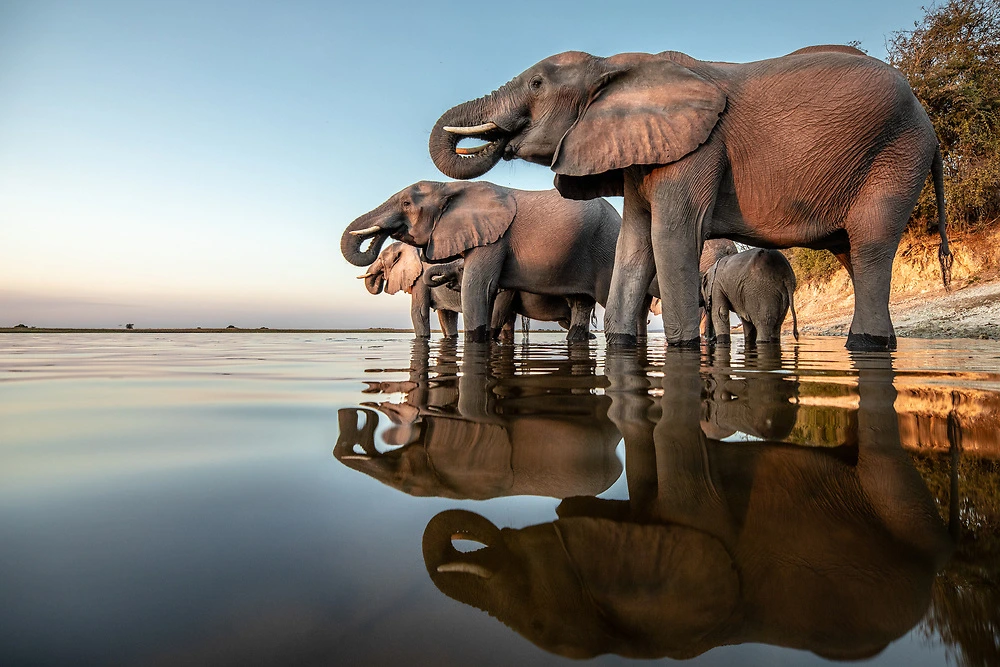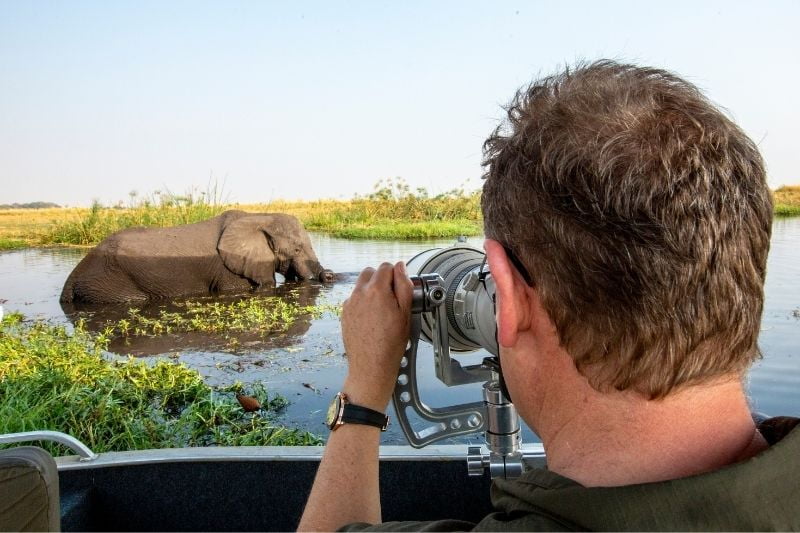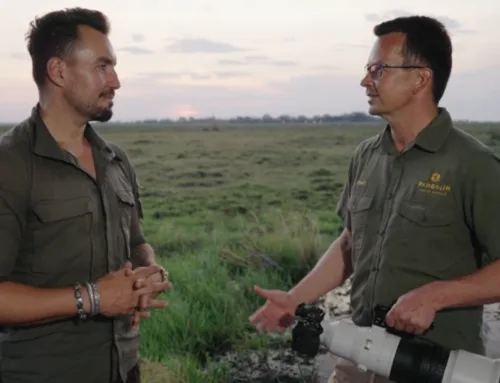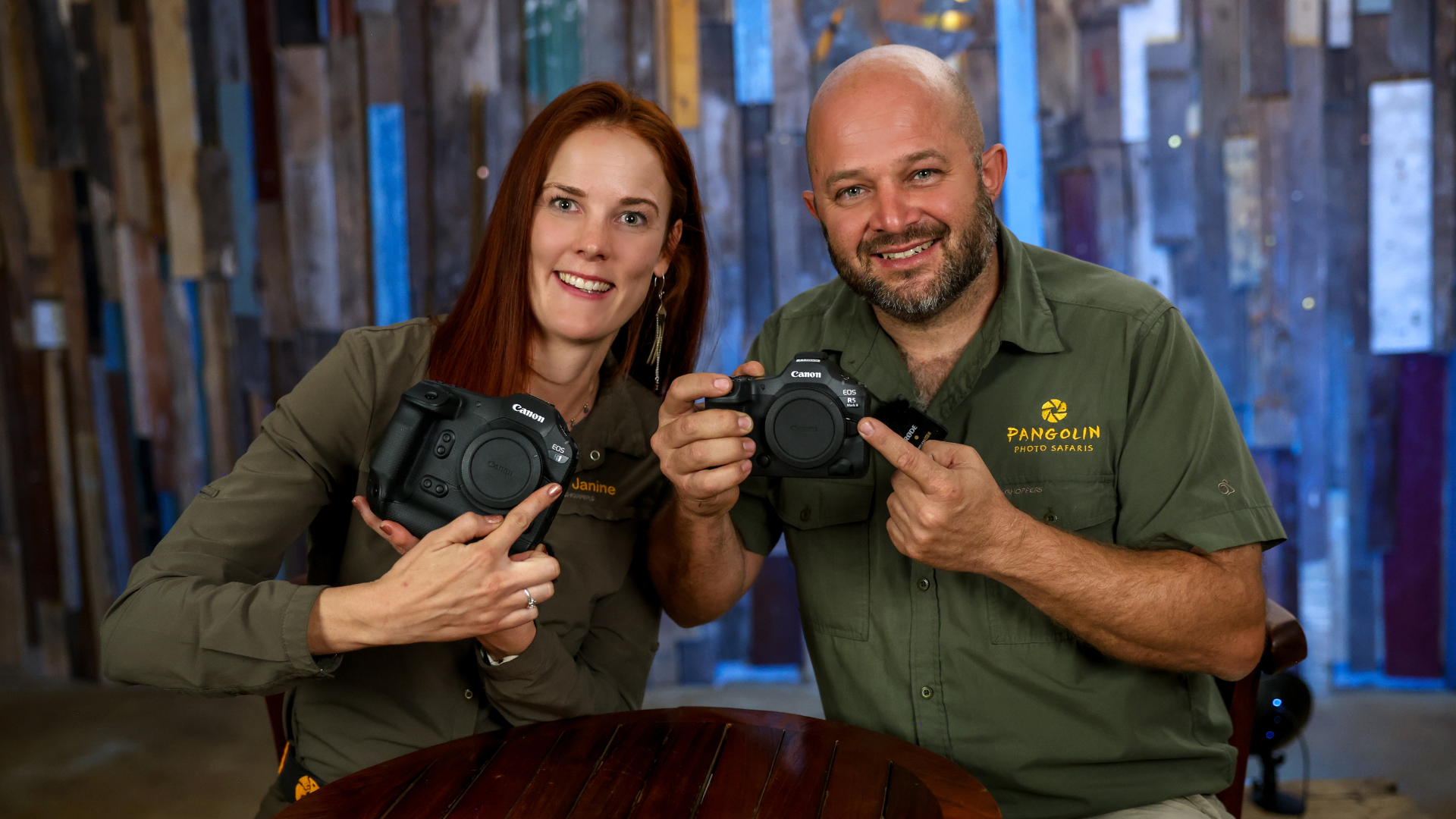
Janine and Guts with the Canon R1 and Canon R5 Mark ii
First Impressions: The New Canon R1 and R5ii
Today marks a significant day for Canon photographers. At long last, Canon unveiled the much-anticipated Canon R1 and R5 Mkii. Guts and Janine share their initial impressions in this blog post and highlight the features that stand out, especially for wildlife photographers.
Stick around to discover the estimated price points for these new models and whether they might be worth adding to your gear collection.
Watch Janine and Guts’ First Impressions of the Canon R1 and R5 Mkii cameras
Read Janine and Guts’ First Impressions of the Canon R1 and R5 Mark II cameras
Exterior Design and User Experience on the Canon R1
The Canon R1’s exterior feels familiar to those transitioning from the R3. Notable changes include a lower-positioned trash button for better differentiation in low-light conditions and a vertical orientation that feels more comfortable. The on-off switch is angled differently for easier operation, and the touch sensor AF-On button now offers a two-step customisation process between half-press and full-press. These tweaks enhance the user experience while maintaining a familiar feel.
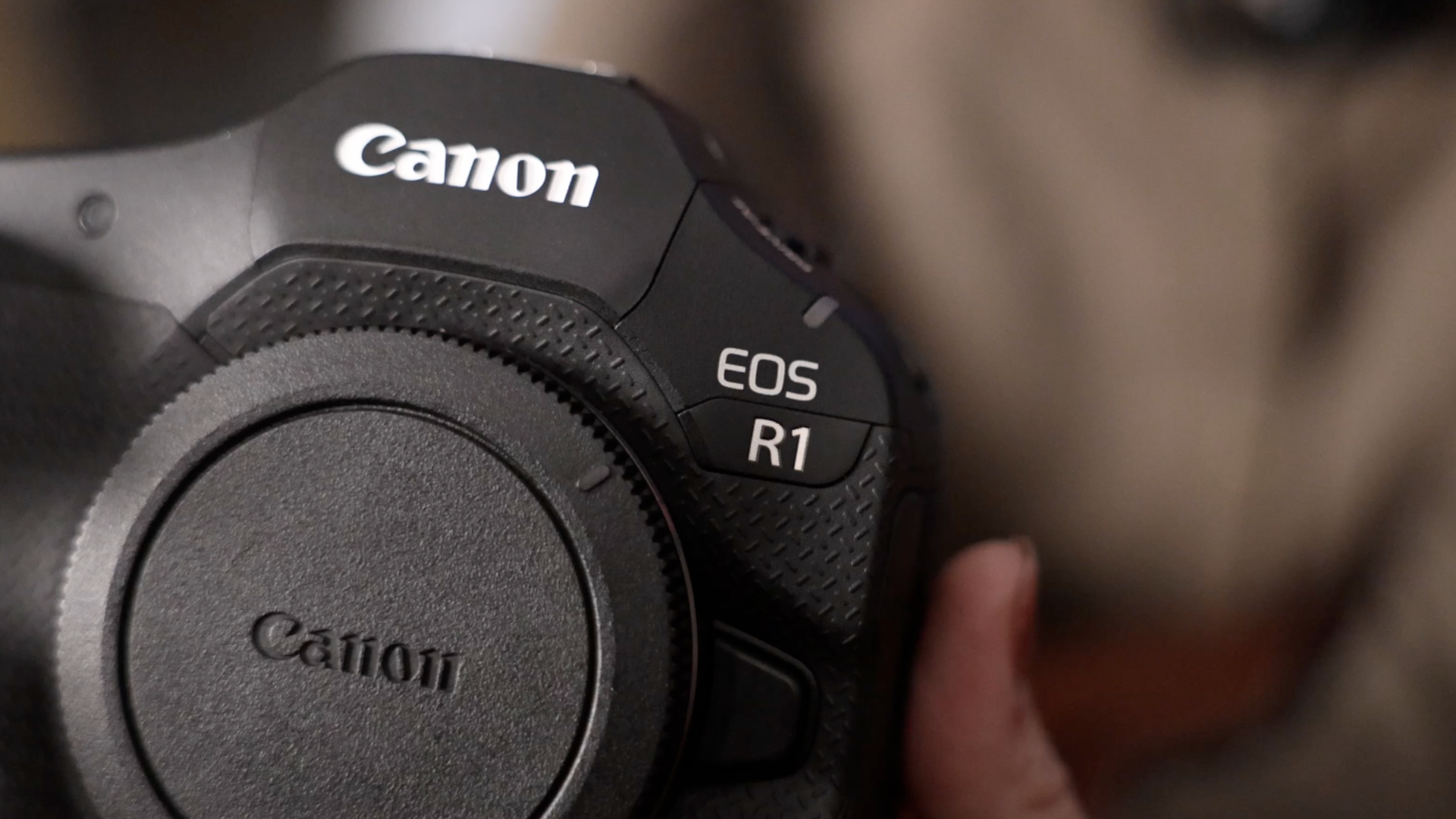
Canon R1 is perfect for professional wildlife photography, featuring an advanced viewfinder and a customisable AF-On button.
Enhanced Viewfinder and Optics
The Canon R5 Mark II impresses with its large viewfinder, promising an experience akin to real-life mirror optics, crucial for wildlife photography where lighting conditions vary. The R1 also boasts an even larger viewfinder than the R3, likely to improve eye control focus sensors. The viewfinder cap now includes a lock, preventing it from getting lost, and the rubber feels more durable, adding to its longevity.
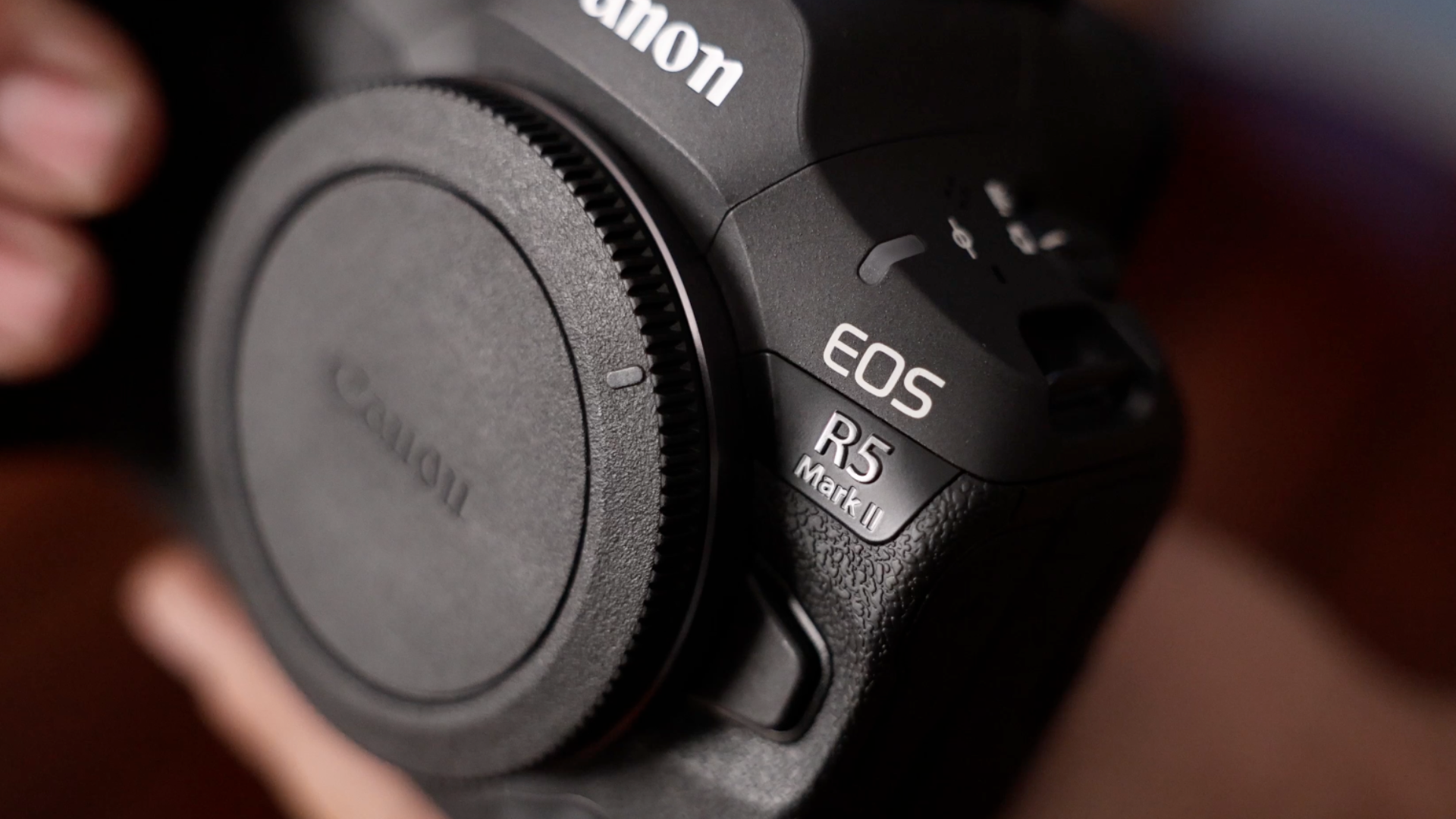
Close-up of the Canon R5 Mark II mirrorless camera, designed for professional wildlife photography.
Advanced Focus and Sensor Capabilities
The Canon R5 Mark II introduces a back-illuminated sensor, offering better illumination and 30 fps speed, paired with 45 megapixels. This combination allows extensive cropping and improved low-light performance over its predecessor. While it might not match the high ISO performance of the R1 or R3, it offers a high megapixel count with significant advantages for wildlife photography.
The Canon R1’s ability to shoot at 40 fps is a game-changer for wildlife photographers, especially with its Cross-type AF points. These points help the camera detect and focus on low-contrast subjects, crucial in low light and challenging conditions like fog and mist. The R1’s AF-ON touchpad allows for faster focus point adjustments, enhancing focusing accuracy for fast-moving animals.
The Pro Capture Feature
Both the Canon R1 and Canon R5 Mark II feature Pro Capture, allowing access to RAW or JPEG files directly without unpacking compressed file packages. Depending on the frame rate, you can record up to a full second in reverse, which is particularly beneficial for capturing brief wildlife moments.
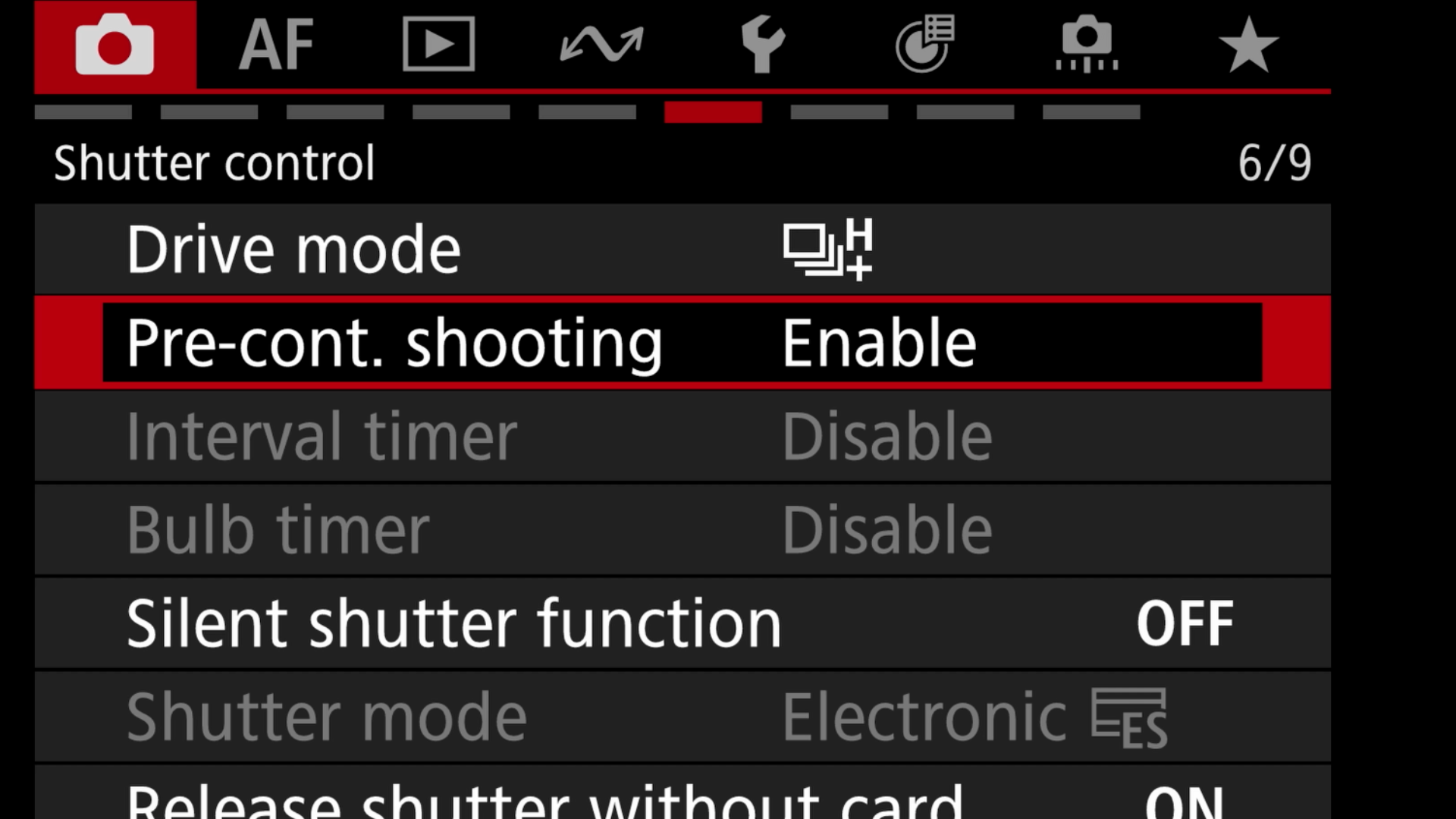
Canon R1 and R5 Mark II offer improved Pre-Capture capabilities with Pro Capture for instant RAW or JPEG file access.
Expected Pricing
While Canon hasn’t confirmed the prices yet, we estimate the Canon R1 to be around $7000 and the Canon R5 Mark II to launch at approximately $5500. These estimates are based on the costs of existing models and comparisons with other brands.
Conclusions and Final Thoughts
The Canon R1 and Canon R5 Mark II bring significant upgrades for wildlife photographers. The R1 offers improved ergonomics, an enhanced viewfinder, and an impressive 40 fps shooting speed, while the R5 Mark II features a large viewfinder, advanced back-illuminated sensor, and versatile Pro Capture.
A big thanks to Canon South Africa for providing us with these amazing cameras for a first-hand look.
Stay tuned to our YouTube channel for in-depth reviews of the Canon R1 and Canon R5 Mark II as we put them to the test out in the field.

